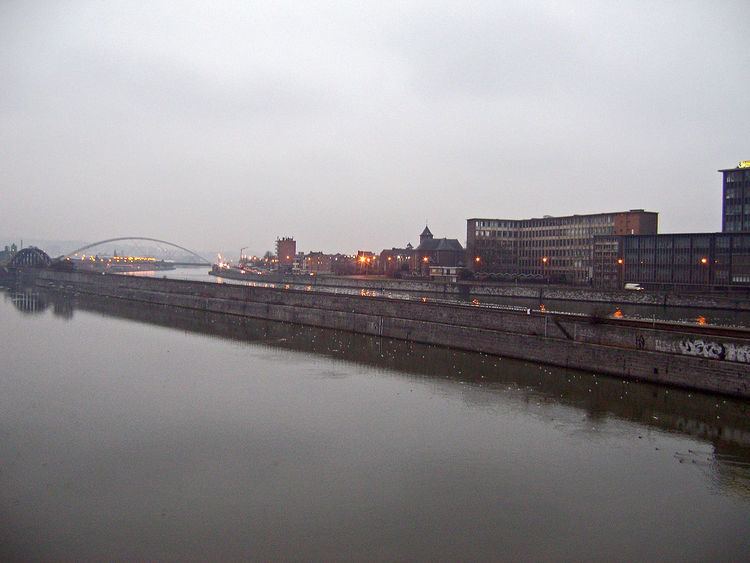Area codes 04 Area 23.54 km² | Postal codes 4040-4042 Website www.herstal.be Area code 04 Local time Friday 3:25 PM | |
 | ||
Weather 12°C, Wind NE at 6 km/h, 49% Humidity | ||
Herstal, formerly known as Heristal, or Héristal, is a municipality of Belgium. It lies in the country's Walloon Region and Province of Liège along the Meuse river. Herstal is included in the "Greater Liège" agglomeration, which counts about 600,000 inhabitants.
Contents
- Map of Herstal Belgium
- Merovingian and Carolingian golden age
- Late Middle Ages until now
- Sights
- Notable people
- Twin cities
- References
Map of Herstal, Belgium
Herstal municipality includes the former communes of Milmort, Vottem, and Liers (partly, the other part being incorporated into Juprelle). A large armaments factory, the Fabrique Nationale or FN, and the biggest industrial zone of Wallonia (Haut-Sart) provide employment locally.
Merovingian and Carolingian golden age
The proximity of the Meuse River and the abundance of local resources attracted settlers in this area since the fifth millennium BC. Around the end of the Roman era and at the beginning of the Merovingian period, the hamlet had become a fortified stronghold, then known as Héristal. The major road that linked Tongeren to Aachen crossed the Meuse here, where a ferry likely carried travelers to Jupille.
In the 7th century, Héristal gave its name to the founder of the family that established the Carolingian dynasty. Pippin, lord of Héristal, the powerful Mayor of the Palace of Austrasia and of Neustria under Merovingian king Theuderic III, probably chose this location as his main residence because of its proximity to the major cities of Tongeren, Maastricht, and Liège. Pippin was the father of Charles of Héristal, victor of the decisive Battle of Tours that stopped the Arab-Muslim advance into northwestern Europe, earning him the nickname Martellus (“hammer”). Charles, in turn, was the grandfather of Charlemagne, also supposedly born in Héristal, where he lived for at least fifteen years. Charlemagne later established his capital in Aachen, ending Héristal’s period of medieval glory as capital of the empire.
Late Middle Ages until now
The town was incorporated into the Duchy of Lower Lotharingia, which became part of the Duchy of Brabant at the end of the 12th century. Despite its proximity to Liège, the territory of Herstal did not become part of the Bishopric of Liège until 1740, date at which the prince-bishop Georges-Louis de Berghes bought it from Frederick II of Prussia. By that time, the town was mainly known for its able craftsmen: ceramists, blacksmiths, and clockmakers.
In the 19th century, Herstal became a city of coal and steel. It would, however, become world-famous thanks to the foundation of the Fabrique Nationale, a major armament factory, in 1889. Several motorcycle manufacturers also established themselves in town. On August 7, 1914, at the very beginning of World War I, the invading German army executed 27 civilians and destroyed 10 homes in Herstal.
After World War II, heavy industry saw a prolonged period of decline, drastically reducing the number of jobs in these areas. Today, Herstal’s economy is picking up again, with more than 200 companies established on its territory, including Techspace, which manufactures precision parts for the European Space Agency’s Ariane rocket.
